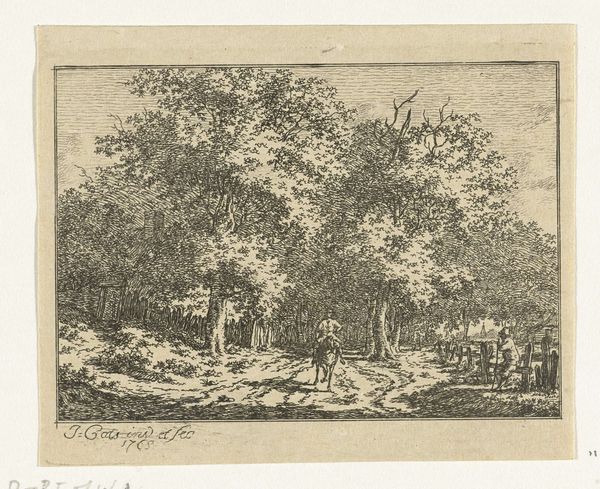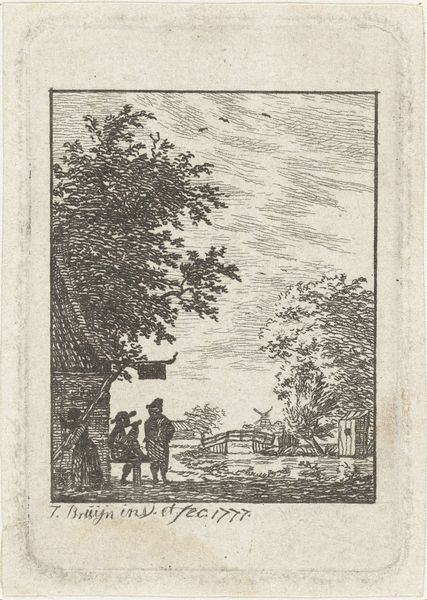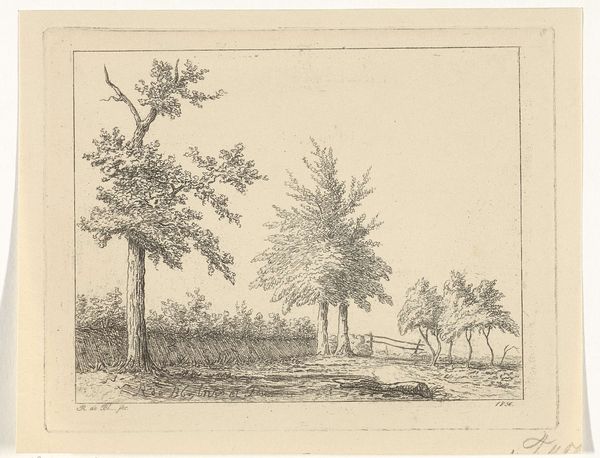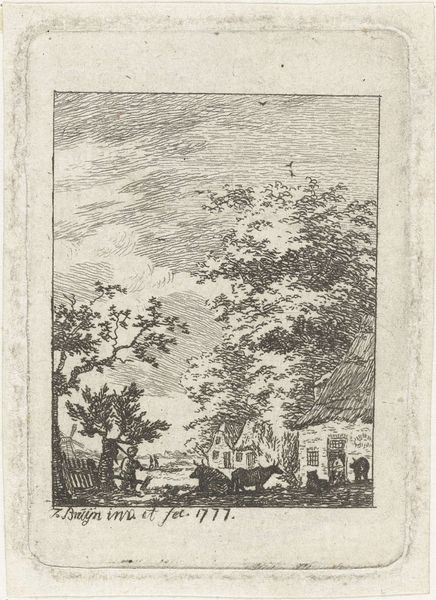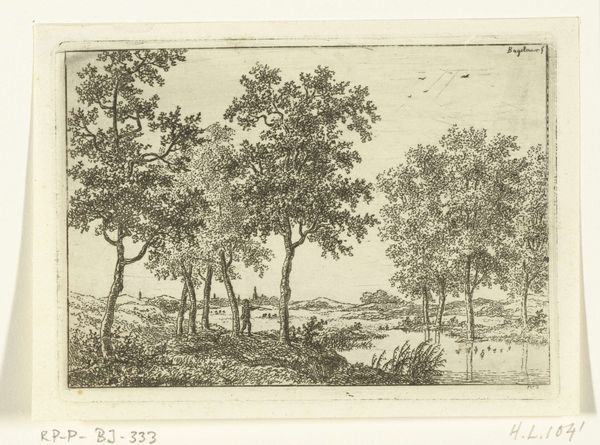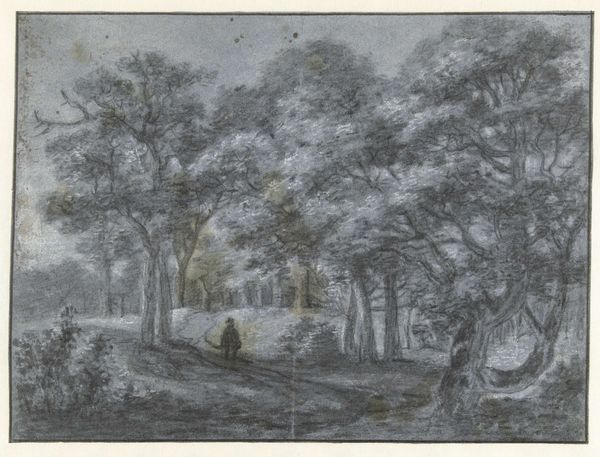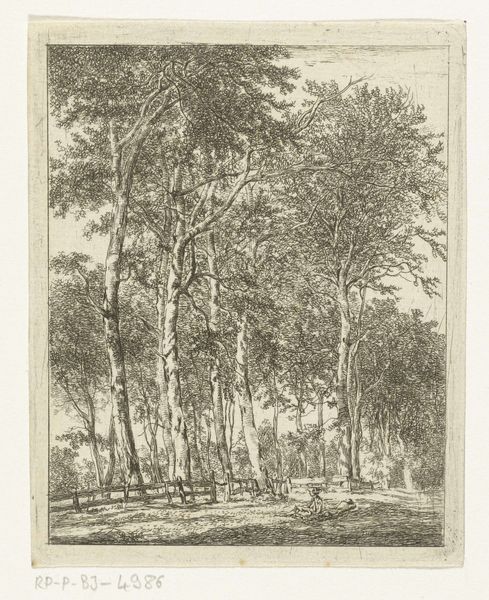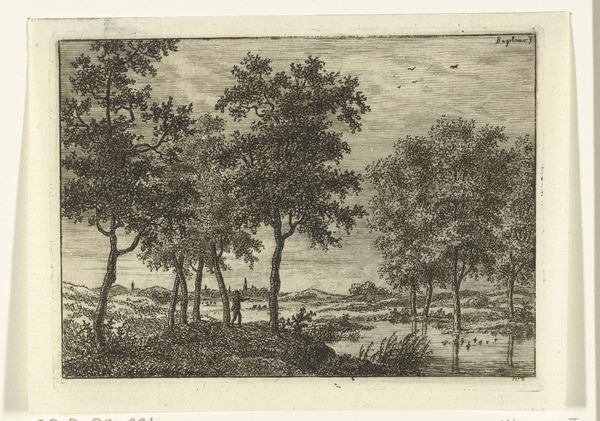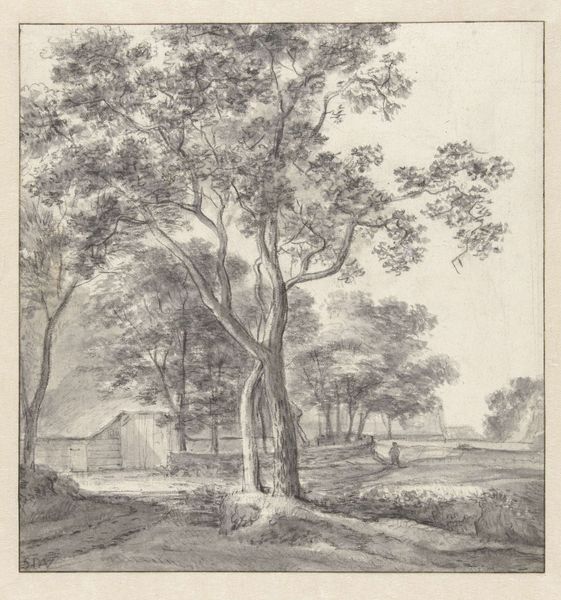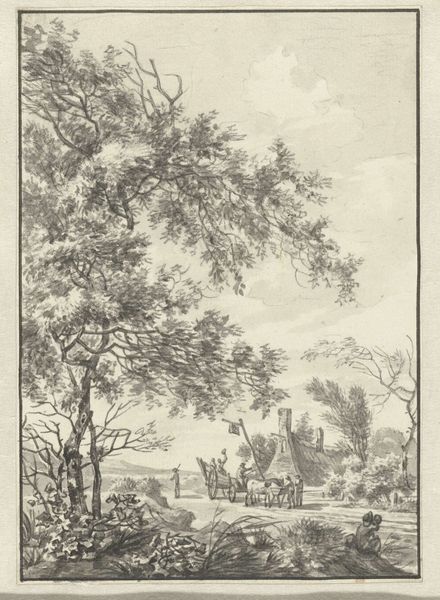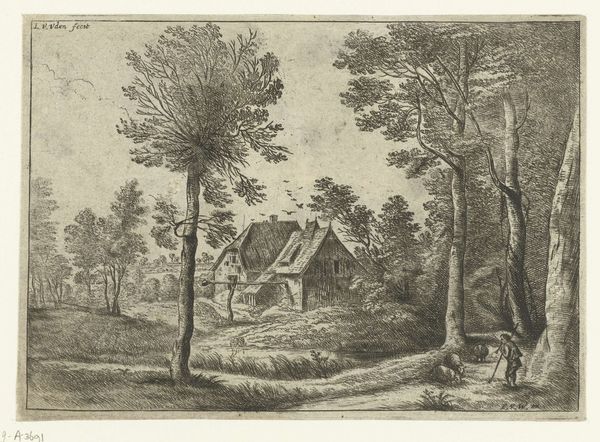
drawing, print, etching, paper, graphite
#
drawing
# print
#
etching
#
landscape
#
etching
#
figuration
#
paper
#
geometric
#
romanticism
#
line
#
graphite
#
cityscape
Dimensions: height 50 mm, width 45 mm
Copyright: Rijks Museum: Open Domain
Editor: Here we have Ernst Willem Jan Bagelaar's "Parklandschap met grafmonument," created sometime between 1798 and 1837, using etching, drawing, and graphite on paper. The composition feels incredibly deliberate, almost staged, despite being a landscape. What do you see in this piece, particularly in how it uses line and form? Curator: Indeed. The rigorous deployment of line is immediately striking. Note how the artist employs etching to create textures that delineate the different planes within the landscape, constructing a balanced composition through careful arrangement. Do you perceive a relationship between the geometric precision of the monument and the organic forms of the trees? Editor: I do. The monument provides a clear, stable form, which contrasts with the more free-flowing shapes of the trees and foliage, creating a sense of visual tension. What is the role of the line in describing the textures of bark or leaves? Curator: The lines create distinctions. Linear variation establishes hierarchies, where darker, heavier lines draw the eye toward essential components, for instance the monument. Notice the stark contrast between the smooth planes of the obelisk versus the texture and depth built into the verdant ground with short, nervous lines. Editor: So it's all about the relationships *between* the elements? Curator: Precisely. Each formal decision has its repercussions on all other aspects. The line weight defines the objects, but even further it contributes to depth. That recession emphasizes a contrast between geometry and natural form. Editor: I see now how even within what seems a natural scene, the artist is controlling our eye with constructed contrasts. Curator: Exactly! Through such manipulation we may gain understanding of the piece's structure, composition and the relationships embedded within.
Comments
No comments
Be the first to comment and join the conversation on the ultimate creative platform.
